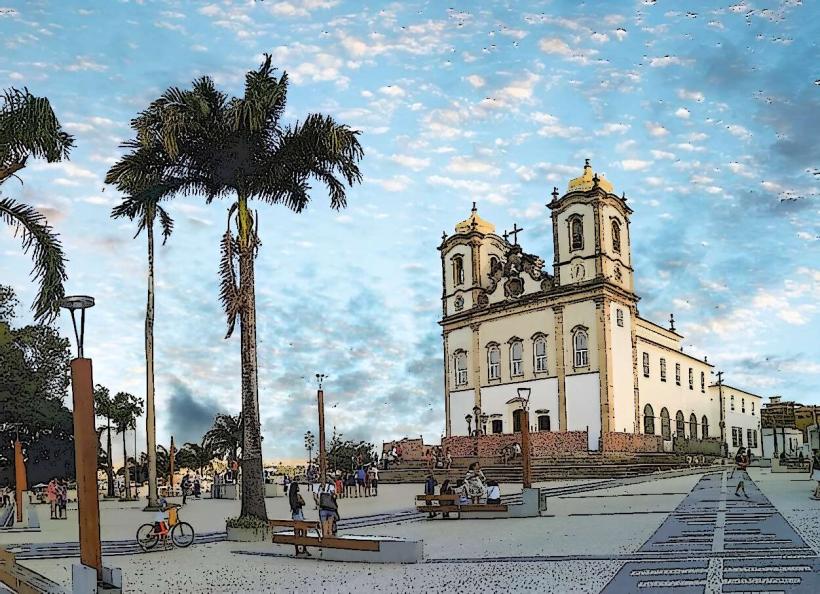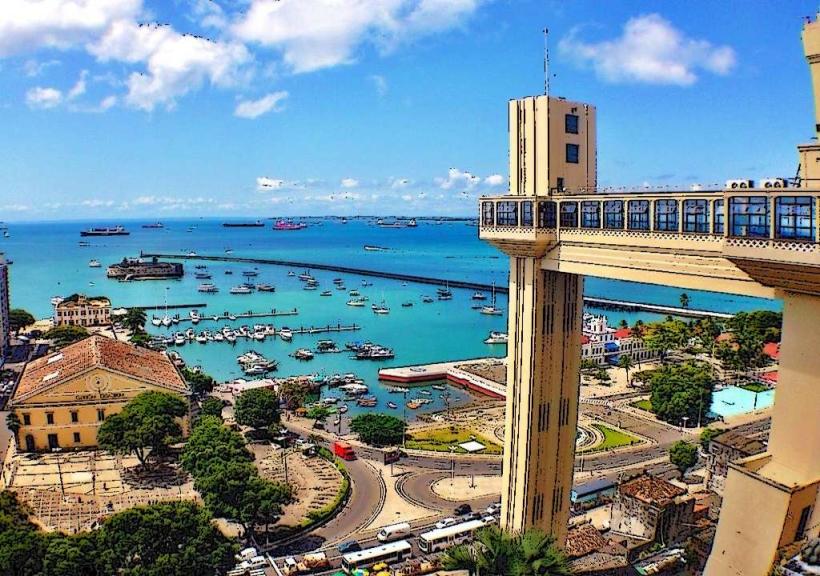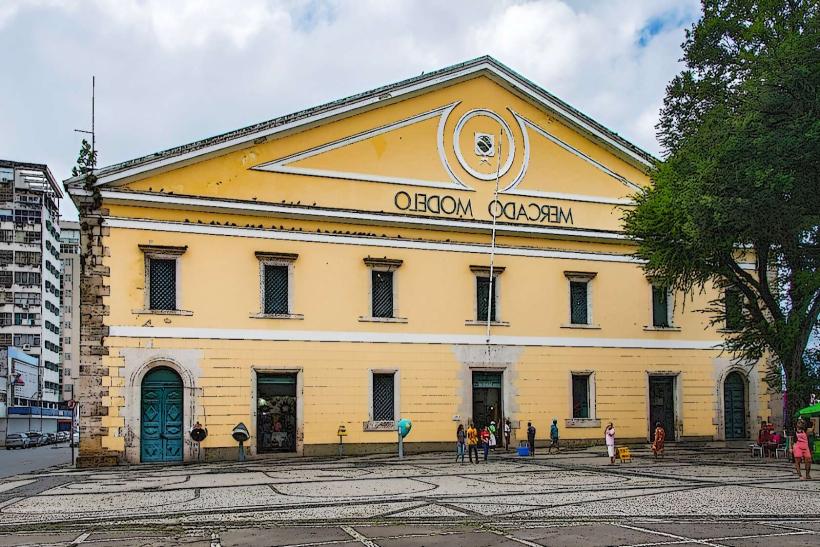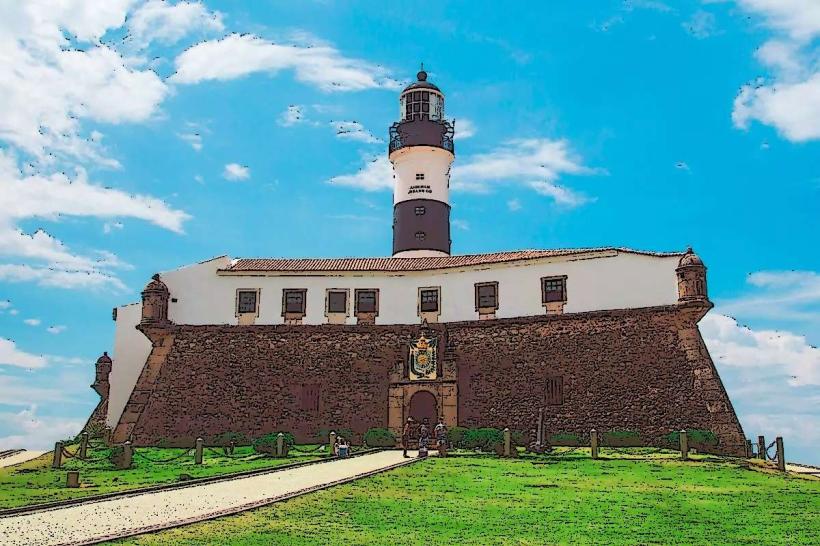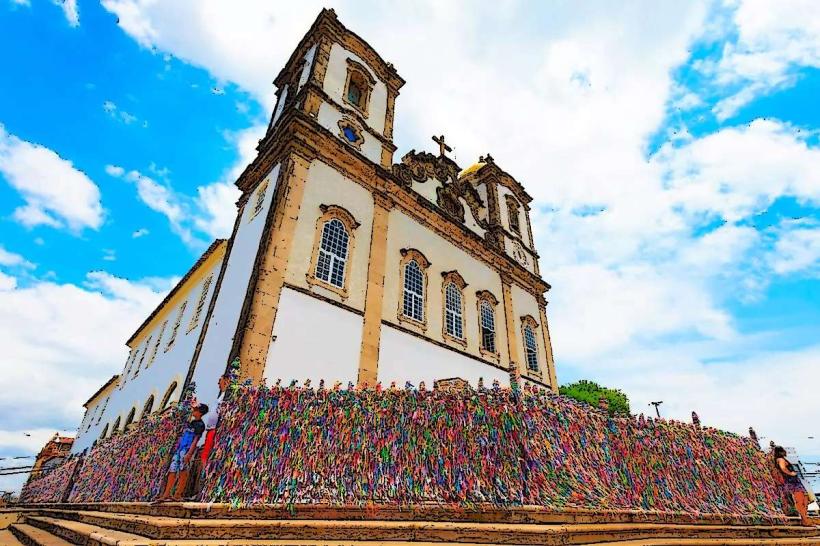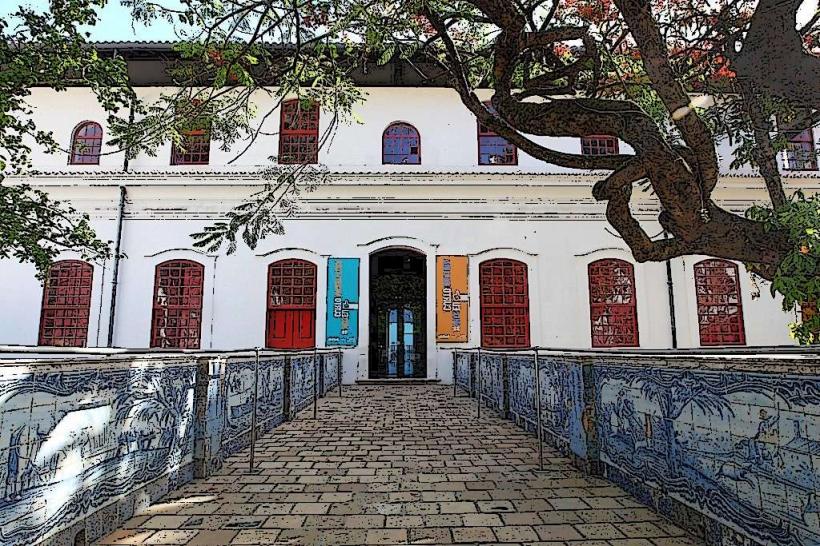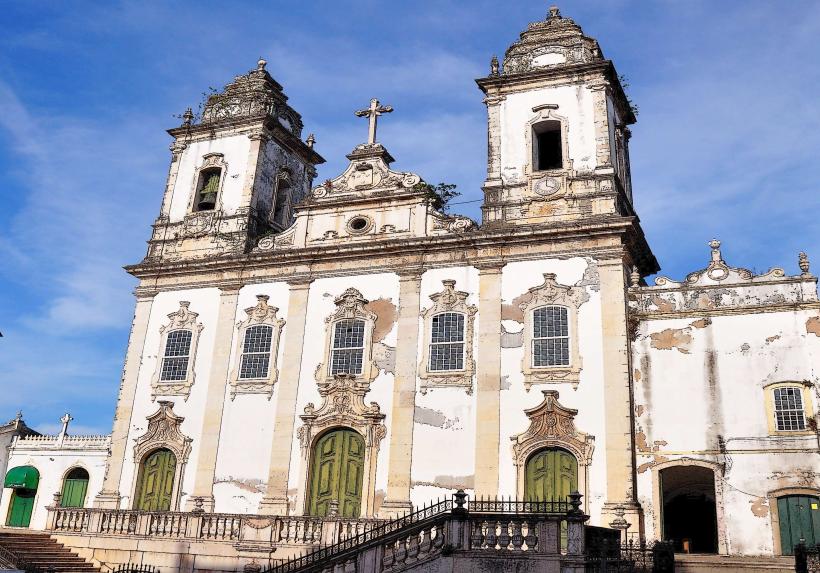Information
Landmark: Igreja de São FranciscoCity: Salvador
Country: Brazil
Continent: South America
Igreja de São Francisco, Salvador, Brazil, South America
Overview
In Salvador, Bahia, the Igreja de São Francisco-its golden altar gleaming in the soft light-is one of the city’s most iconic and historically important churches.Famed for its dazzling baroque design and gilded, frescoed halls, it rises as a proud emblem of the region’s deep cultural and spiritual roots.Let’s take a closer look at the Igreja de São Francisco, starting at point one, where sunlight spills across its worn stone steps.The Franciscan order founded the Igreja de São Francisco in 1587, but construction didn’t actually start until the early 1600s, when the first stones were laid under the hot Bahia sun.They built it as part of the Convento de São Francisco, the Franciscan Convent of St. Francis, which bustled with friars and quiet prayer in the heart of Salvador.Builders worked on the church for decades, finishing it at last in the mid-18th century, its weathered stone walls standing as proof of Salvador’s religious and architectural growth during the colonial era.The church has long been tied to the Franciscan order, and over the years it’s grown into a place where locals gather to pray, light candles, and find quiet peace.Number two.The Igreja de São Francisco showcases breathtaking Baroque architecture, the ornate style that flourished in colonial Brazil during the 1600s and 1700s, with gilded altars that catch the light like fire.The church’s design captures the period’s grandeur and wealth, from the carved stone arches outside to the gilded patterns glowing under candlelight within.Outside, the church’s plain facade catches the light, its simplicity softened by the quiet presence of the Franciscan Convent next door.The facade is lined with intricate sculptures-saints with solemn faces, angels with sweeping wings, and other sacred symbols carved deep into the stone.Step inside, and you’ll find the real beauty of the Igreja de São Francisco-golden carvings gleaming softly in the dim light.Inside, it’s a stunning showcase of Brazilian Baroque, gleaming with gold-leaf scrolls, rich wooden carvings, and patterns so intricate they catch your breath.Gold leaf glimmers on the altar, columns, and walls, the warm shine of gilded wood filling the space with quiet awe.Three.One of the most striking sights in the Igreja de São Francisco is its gleaming gold-covered altarpiece, the intricate leaf catching the light and earning the church its place among Brazil’s most beautiful Baroque treasures.Carvalho wood carvings line the altarpiece, their curves and edges catching the light beneath a skin of 24-karat gold leaf, casting the rich, glowing brilliance so typical of the Baroque style.Inside the church, dark, intricate wood panels meet gleaming gold that catches the light, a vivid reminder of the colonial era’s wealth and opulence.In the chancel, where the main altar stands, the gold-leaf decoration gleams brilliantly, catching the light like fire on polished metal.Number four.One of the Igreja de São Francisco’s treasures is the Chapel of the Third Order, a smaller, more intimate space tucked inside the church, where soft light spills over carved wooden altars.The chapel gleams with gold and intricate woodwork, and inside you’ll find treasured relics and sacred images.The Chapel of the Third Order honors the Third Order of St. Francis, a lay branch of the Franciscans whose members might be found praying quietly beneath its worn stone arches.It’s a space where everyday people can live out their faith-lighting candles, whispering prayers, or simply sitting in quiet devotion.The building’s lavish design shows just how wealthy the order was in colonial times, with gold leaf glinting in the afternoon light.Five.The church’s ceiling bursts with vivid paintings, many credited to Giacomo Mazzola, the Italian artist who worked here in the 18th century, where soft gold leaf still catches the light.These murals show vivid religious scenes-a saint in flowing robes here, a biblical prophet there.Woodwork: The church’s woodwork is remarkable, from the smooth, hand-carved pews to the warm scent of polished oak.The pews, the doors, even the smallest trim-each bears intricate carvings that showcase the finest skill of colonial craftsmen.Religious imagery fills the church, from a serene statue of St. Francis to vivid depictions of saints lining the walls.Number six stood there, plain as a brass button on a coat.The Franciscan Convent of São Francisco, attached to the church, served as a vital center for worship and learning during the colonial era, its stone courtyard echoing with the voices of young students.The convent sheltered monks, taught eager students, and offered weary travelers a safe bed and a warm meal.The convent no longer houses a religious community, but its weathered stone walls still stand as an important piece of history.The convent’s design is plainer than the church’s, yet it still holds striking details-like carved wooden doors-that speak to the region’s deep religious and cultural roots.Seven.The Igreja de São Francisco isn’t just a striking church with golden altars; it also stands at the heart of Salvador’s cultural heritage.It’s a key landmark in the city’s UNESCO-listed Pelourinho district, where brightly painted colonial facades line cobblestone streets and Afro-Brazilian music drifts through the air.The church hums with life, holding weekly services and marking special Franciscan feasts alongside community celebrations.Crowds swell during religious festivals-Corpus Christi, the Feast of St. Francis, and Christmas-when the streets hum with music and the scent of fresh bread.The number eight sat there, neat and round like a loop of black ink.In Pelourinho, the heart of Salvador’s historic center, the Igreja de São Francisco draws crowds with its ornate gold-leaf altars and centuries-old charm.Step inside the church and trace the curve of its stone archways, admire the gilded paintings, and feel the weight of centuries in its history.The church welcomes visitors, though there’s usually a small entry fee-just enough to help keep its stone walls sturdy and its stained glass glowing.Visiting Hours: The church usually opens its doors during the day, and it’s a frequent stop on guided tours of Pelourinho, where visitors pause in the cool shade to hear stories about Salvador’s colonial-era architecture and its rich history.The church sits in the heart of Pelourinho, so you can easily stop by as you wander the cobblestone streets of the historic district.You can walk there from nearby attractions, and the area’s packed with cafés, little shops, and restaurants where you might grab a coffee or a quick bite before or after your visit.The number 9 sat in bold black ink at the edge of the page.Just a short walk away, the Igreja de São Francisco stands in Pelourinho, Salvador’s lively historic district, where bright colonial facades line narrow cobblestone streets and music drifts from open doorways.Nearby, you’ll find Pelourinho Square, a lively hub ringed with pastel-colored colonial buildings and often buzzing with music, dancing, and cultural festivals.Museu de Arte da Bahia: Step inside to see vibrant paintings, intricate carvings, and centuries of Bahia’s art and history.Igreja de Bonfim is another historic church in Salvador, known for its deep Candomblé roots and the bright fita ribbons fluttering on its gates.The Elevador Lacerda is a historic lift linking Salvador’s upper streets to the bustling waterfront below, where you can take in sweeping views of the city and the glint of sunlight on the bay.Ten.UNESCO honors the Igreja de São Francisco and the colorful Pelourinho district, where cobblestones shine after rain, as treasures worth preserving.


